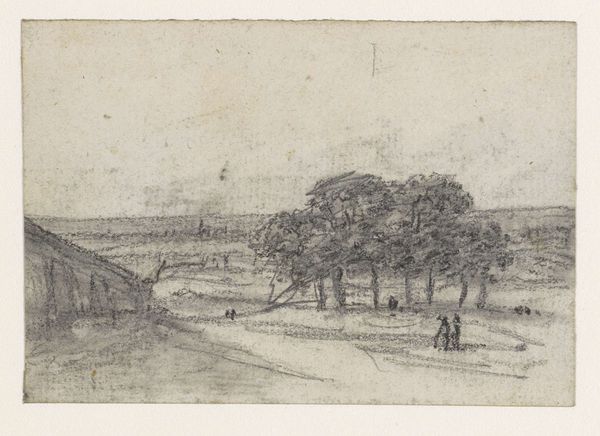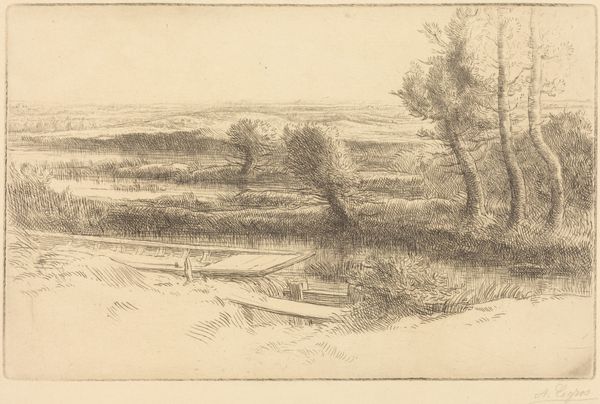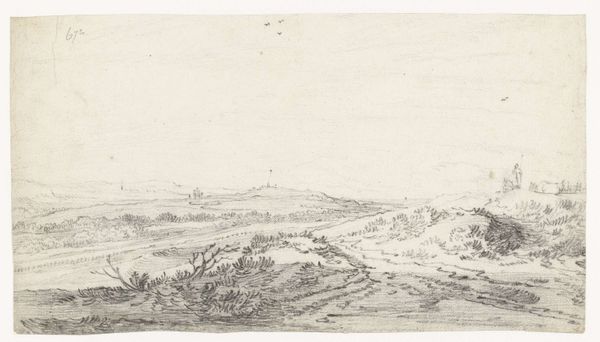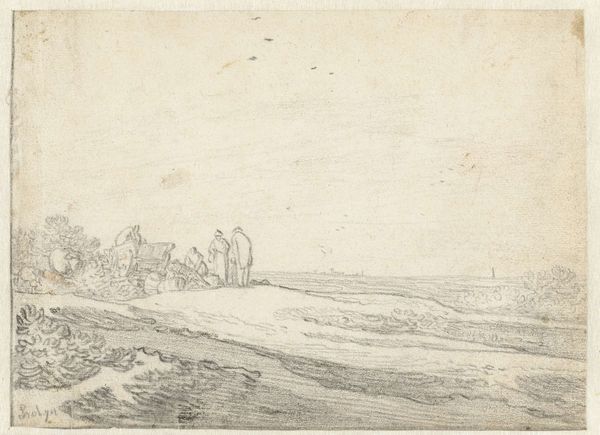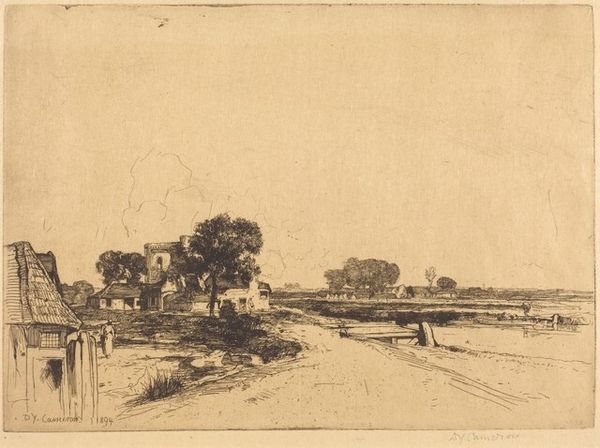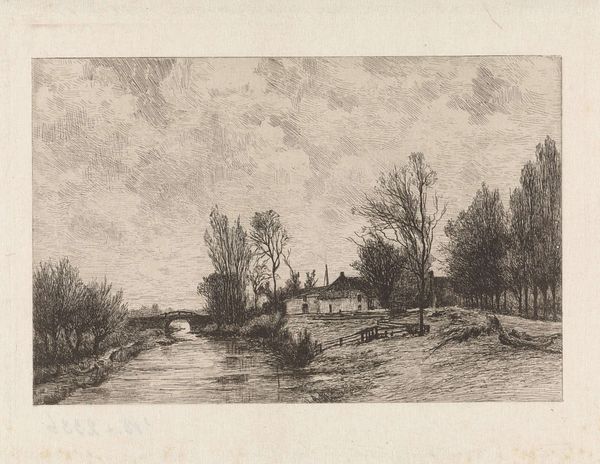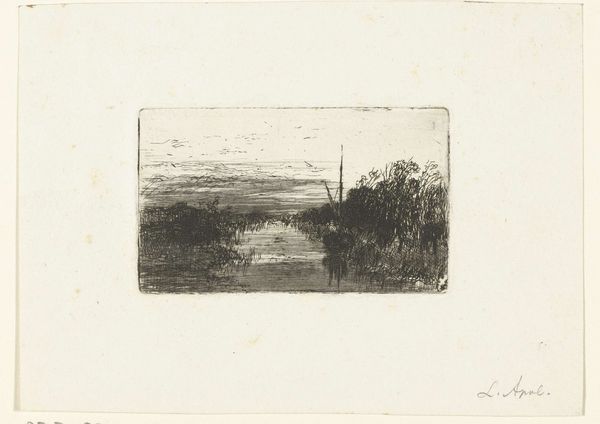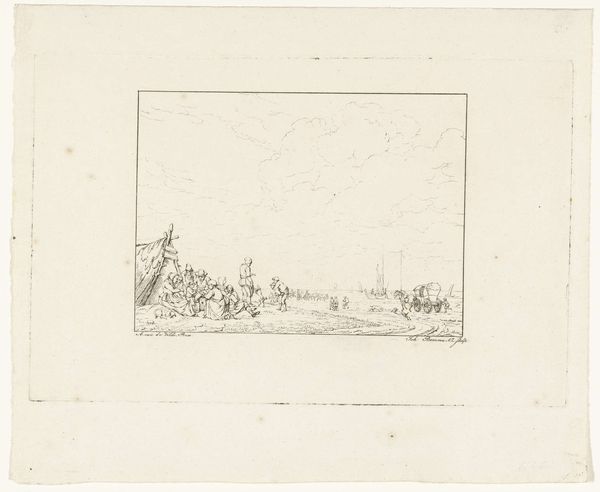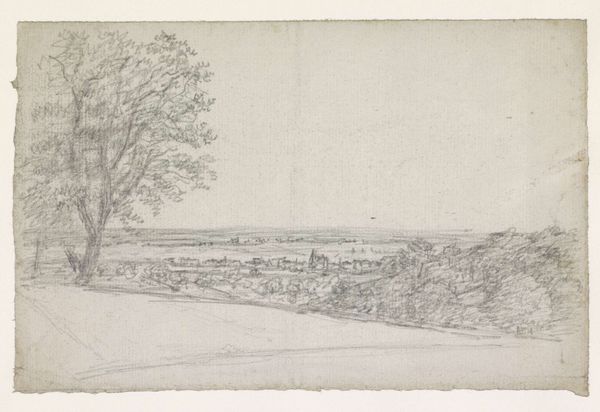
etching
#
dutch-golden-age
#
etching
#
landscape
#
etching
#
realism
Dimensions: height 75 mm, width 205 mm
Copyright: Rijks Museum: Open Domain
Curator: This etching from 1659, "Landscape with a Road on a Dike", offers us a glimpse into the Dutch Golden Age, through the eyes of Pieter de With, currently held in the collection of the Rijksmuseum. Editor: There's such a quiet intimacy to it. The delicate lines of the etching almost whisper. It feels as though time has slowed, observing something simultaneously serene and somewhat desolate. Curator: Note the title—it’s incredibly descriptive. The dirt composition in the foreground gives the scene a very earthy, raw feel, which speaks volumes about the labor involved in land reclamation. Editor: Absolutely. De With emphasizes a structure with the path or the road. This etching feels remarkably structured, despite the apparent simplicity. The composition guides the eye along that road, from foreground to distant horizon. Curator: Yes, that is also related to his realistic interpretation; you see the dike cutting through, altering the terrain. How does that interplay with the social context do you think? We can see a few indistinct people alongside the road in the distance. Editor: These indistinct figures and their proximity within this desolate landscape become a meditation of life itself. As they work, rest, travel. I get an urge to contemplate what are their struggles? This piece encourages a sense of scale and invites meditation on nature and human condition through simplicity. Curator: The use of etching allowed for multiple impressions. Who had access to this landscape imagery and what did that accessibility mean in the context of a growing merchant class and increasing wealth disparities? We often frame “high art” in different forms of labor but landscape etchings remind us that art making exists beyond painting or sculpting, too. Editor: Agreed. Pieter De With distills nature into these pure, simplified forms; they allow viewers a moment of reflective solace in nature. The quiet of this particular artwork has drawn us each into specific details: to make us explore more deeply how it presents art as both concept and artifact.
Comments
No comments
Be the first to comment and join the conversation on the ultimate creative platform.
